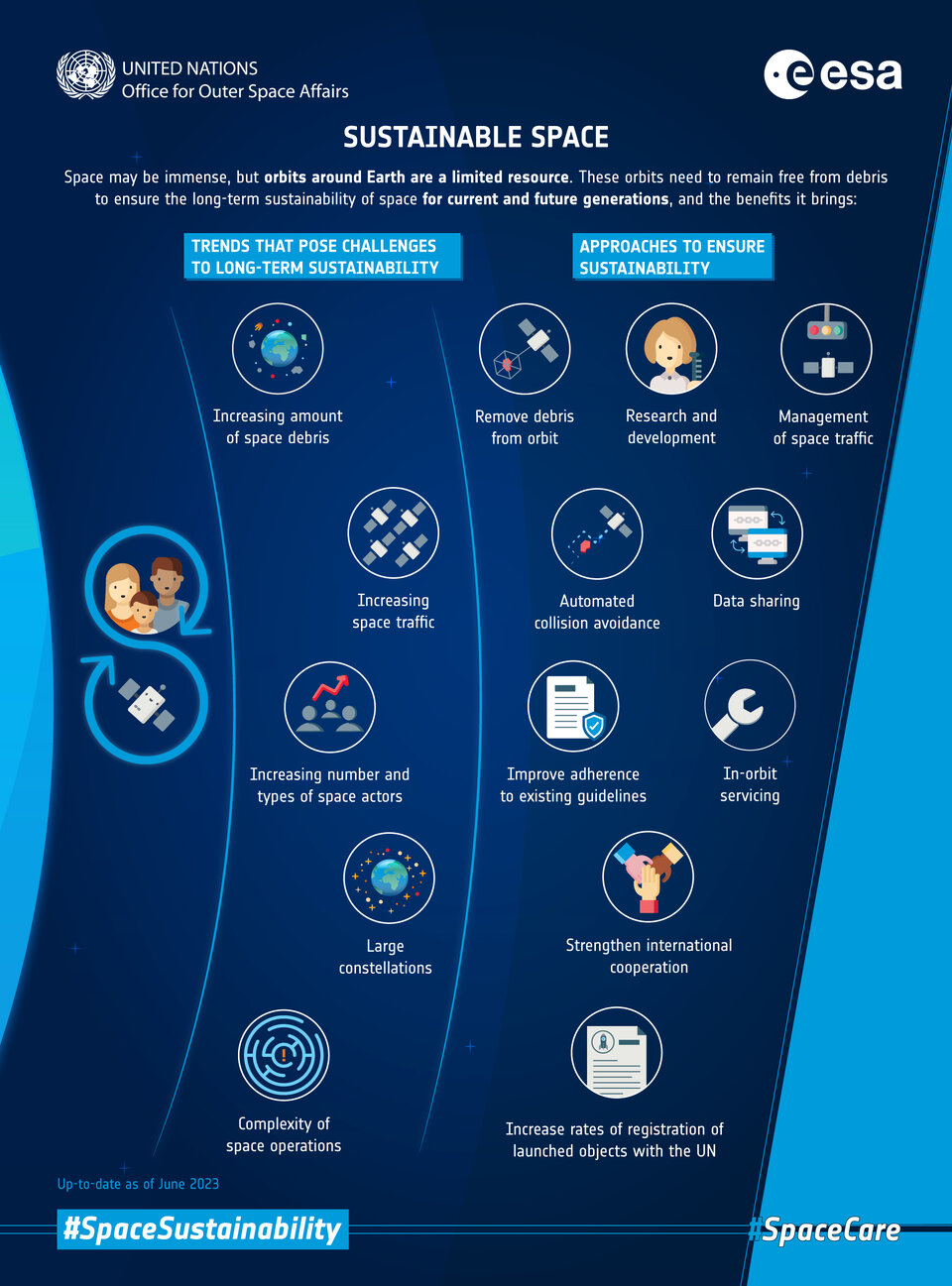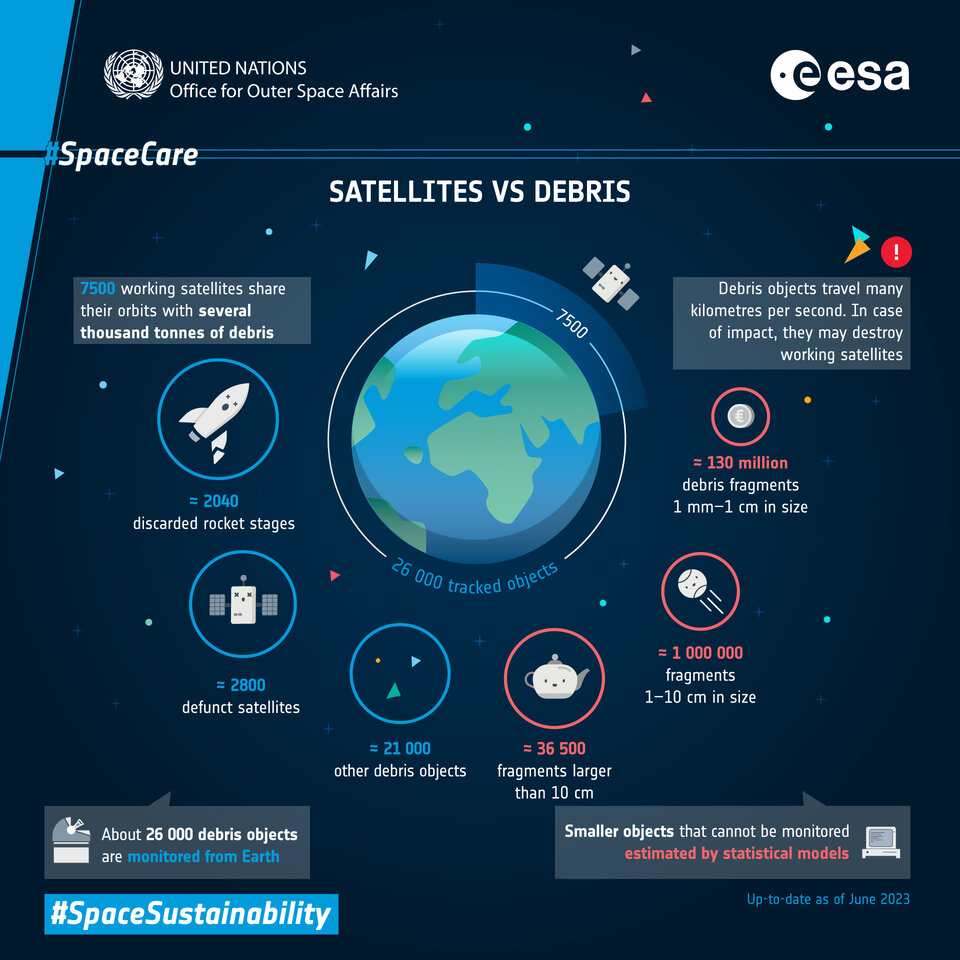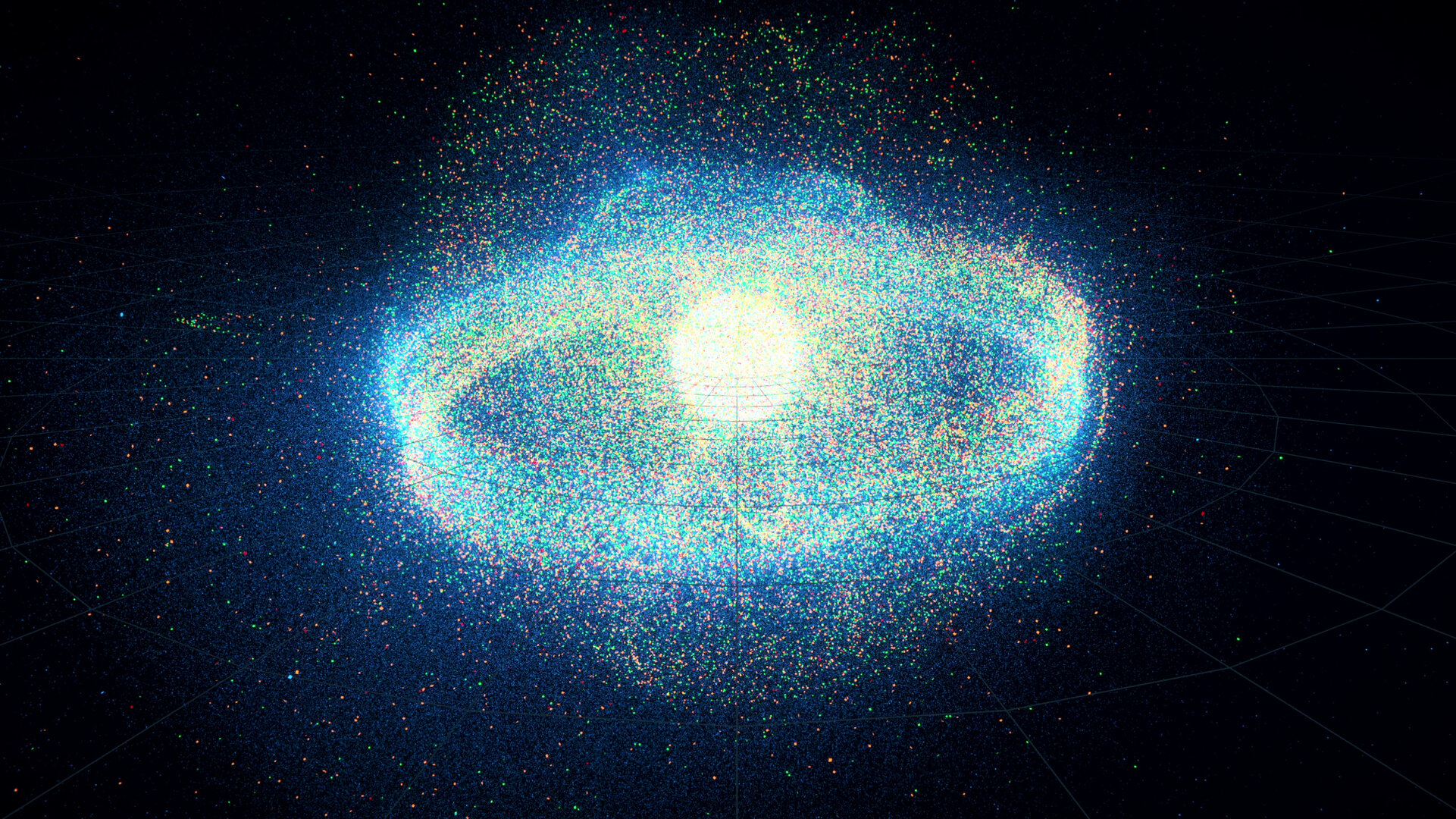Looking back on a rubbish week
Last week, ESA brought together the world’s largest group of experts on a fascinating and pressing issue: space debris.
Our time in space, since the first satellite launched in 1957, has been productive – but messy. We’ve ushered in a new technological era, we’ve gained insights into our planet’s changing climate, but we’ve also littered near-Earth space.
Lingering remnants of past missions now threaten those of the future. So what did we learn from ESA’s 8th European Conference on Space Debris?
Lessons learnt
The message of this year’s conference was clear: it’s time to act. The route to avoiding a space debris crisis? We, the international community, need:
- a holistic view of the environment that includes space, in particular near-Earth space
- to make full debris mitigation a reality and roll out removal services
- to accelerate the technology development needed to manage space traffic
- to agree on efficient and accepted standards and regulatory frameworks
- to automate collision avoidance to address short-term risks
- to address space sustainability to address long-term risks
- to reach out to be aware of the costs and the impact on others
“With 570 registered participants this year’s conference saw a record turnout from across the space sector, our largest attendance since the conference began in 1993,” explains Tim Flohrer, Head of ESA’s Space Debris Office.
“We are especially happy to see that about a quarter of the participants were Master or PhD students, the next generation of researchers, engineers and managers dealing with the space debris problem.”
Long-term sustainability

One of the key themes this year was sustainability over the long term. On Earth, we understand the importance of sustainable practises to ensure the longevity of limited resources. But how can space – vast and empty – be compared to forests, fish stocks or fashion?
Space may seem vast, but orbits around Earth are a limited natural resource - there are only so many paths for Earth observation, telecommunication and navigation satellites to follow. Space may seem empty, but near Earth, it is filled with millions of fragments of debris threatening to make our most productive and economically valuable orbits entirely useless.
We must extend sustainable practises to space – but this isn’t a one way street. By protecting orbital regions, we also ensure sustainability on Earth. Space-based geolocation and Earth observation services directly contribute to almost 40% of the 169 targets that underpin the United Nations Sustainable Development Goals. Add in telecommunications, and this goes up significantly.
So it may be time to act, but what do we do? In simple terms, the ‘fight’ against debris occurs on two fronts: mitigation and removal.
Preventing further debris

The first step in preventing more debris being made is understanding where it comes from. To date, the majority of debris fragments have come from ‘explosive’ events, such as exploding fuel tanks or batteries. Advances in satellite and rocket design means this should be a thing of the past, but the enormous increase in objects launched into orbit means we have another challenge on our hands, collisions.
Current methods of avoiding collisions in space are extremely costly. They take skill and time to plan, cost precious fuel and often require instruments to be temporarily shut off, preventing them from collecting important data. ESA’s Space Debris Office already receives hundreds of potential collision alerts each week, and we need to adapt our current methods.
As such, ESA is also developing Artificial Intelligence technologies to support automated collision avoidance. But just as we rely on ‘rules of the road’ on our highways and in our skies, work is also needed to get some ‘order in our orbits’ – a traffic management system for the heavens.
At present, adherence to debris mitigation guidelines varies widely. To get better, also voluntary incentives such as the space sustainability rating currently in development will recognise sustainable behaviour.
Removing debris from orbit
However even with perfect sustainable behaviour, failures in orbit will occur - so we need to be able to remove debris from orbit. Current guidelines say that satellites should ‘get out of the way’ soon after their mission ends, but there are many already in orbit that can no longer be controlled.
ESA’s Clearspace-1 will be the first-ever mission to remove an existing derelict object from orbit. The mission is being purchased by ESA from a start-up company so as to foster a new commercial clean-up sector in Europe's space economy.
This mission will test and showcase a range of new technologies and capabilities, including advanced guidance, navigation and control systems and vision-based AI, allowing the chaser satellite to close safely on the target on an autonomous basis, as well as robotic arms to achieve capture.


Access the video
Today, the mission is under intense development by ClearSpace SA, a company in Switzerland, which is working together with a grouping of some 20 companies and institutes from eight European countries to achieve a series of critical design milestones prior to the start of construction in 2022.
This is just one element of ESA’s plan to clean up space. ESA’s Clean Space Office is looking to all kinds of possible futures, including ‘in-orbit servicing’ technologies that would make it possible to not only bring down dead satellites, but even extend or bring them back to life through refuelling and refurbishing, or reboosting them to new and useful orbits.
Our role
“Our role as a space agency is to show what is possible, to help carve out new commercial sectors that centre around sustainability and to show that responsible space exploration isn’t just possible, it is mandatory and necessary,” says Tim.














 Germany
Germany
 Austria
Austria
 Belgium
Belgium
 Denmark
Denmark
 Spain
Spain
 Estonia
Estonia
 Finland
Finland
 France
France
 Greece
Greece
 Hungary
Hungary
 Ireland
Ireland
 Italy
Italy
 Luxembourg
Luxembourg
 Norway
Norway
 The Netherlands
The Netherlands
 Poland
Poland
 Portugal
Portugal
 Czechia
Czechia
 Romania
Romania
 United Kingdom
United Kingdom
 Slovenia
Slovenia
 Sweden
Sweden
 Switzerland
Switzerland

























